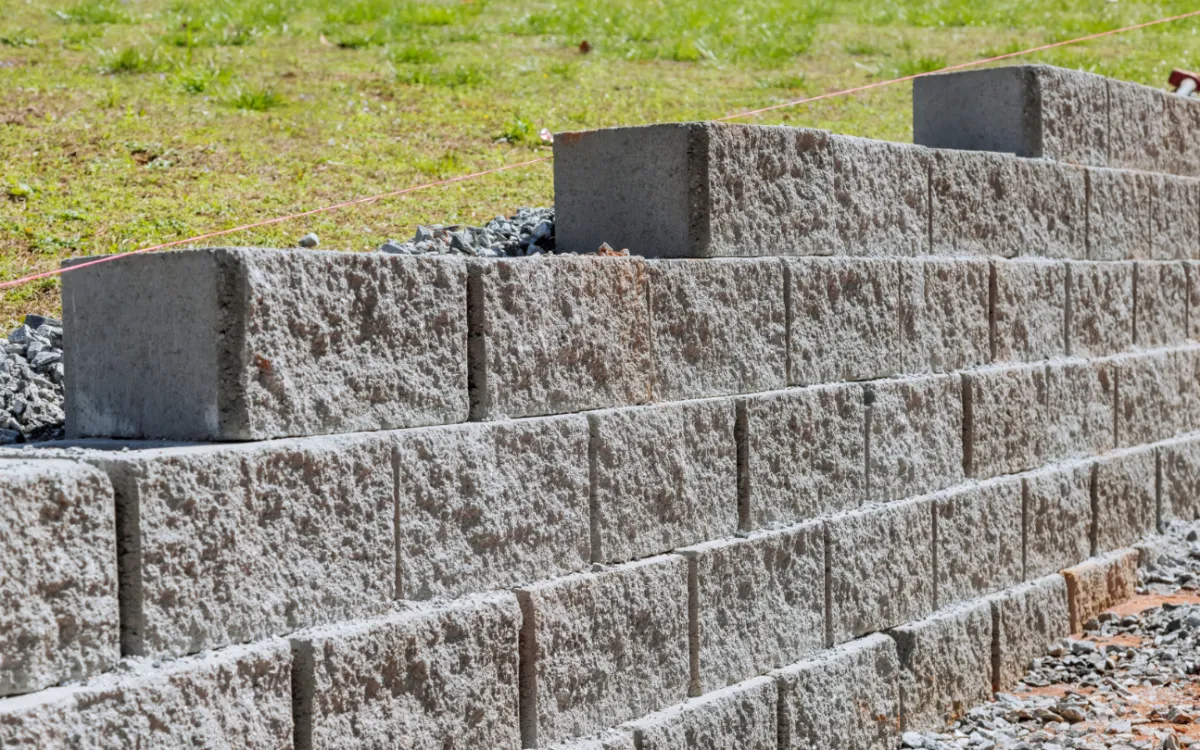
Serving IL & IN: Clark, Vigo, Edgar, Crawford, Sullivan, Clinton, Coles & Greene Counties
Blog

Best Retaining Wall Contractors near Vigo County, IL
Top Retaining Wall Experts Serving Vigo County – Get Your Project Started Today
1. Why You’re Probably Searching for a Retaining Wall Contractor Right Now
You’re not out here reading about retaining walls just for fun. If you’re like most folks we work with around Vigo County and the surrounding areas, you’ve got a yard problem — and you’re sick of looking at it.
Maybe your lawn’s washing out every time it rains. Maybe that sloped backyard of yours is starting to look more like a ski hill than a space to enjoy. Or maybe you’ve already got a retaining wall that’s leaning, cracking, or just not holding up like it should. Either way, you’ve probably hit that point where you realize: “This isn’t just cosmetic anymore — this could cost me.”
We get it. A lot of homeowners feel overwhelmed right about now. You’re worried about spending too much, choosing the wrong contractor, or making a decision that won’t hold up over time. That nervous feeling in your gut? Normal.
At Kuhn Dirtworks, Inc., based just down the road in Marshall, IL, we’ve had conversations with folks all across Clark, Vigo, Edgar, Crawford, Sullivan, Clinton, Coles, and Greene Counties who are right where you are now. And that’s why we’re writing this — not to sell you something, but to give you the honest info we know you’re looking for.
2. The Real Purpose of a Retaining Wall (It’s More Than Just Looks)
Sure, retaining walls can be beautiful. But their real job? It’s holding back soil. That means managing slopes, preventing erosion, improving drainage, and creating level, usable space in a yard that would otherwise be difficult to enjoy or even dangerous.
Here in places like Vigo County, where the land can be uneven and the weather unpredictable, retaining walls aren’t just about “curb appeal.” They protect your property. They prevent flooding. And when done right, they can add value to your home without turning into a never-ending maintenance headache.
3. What Makes One Contractor Better Than Another? Here’s What to Look For
Let’s be real — lots of companies say they build retaining walls. But here’s what separates the good ones from the ones who leave you with drainage issues and regrets:
Local experience: The soil here isn’t the same as it is in other parts of Illinois. You want someone who understands this region’s quirks.
Customization: Every yard is different. Cookie-cutter retaining walls don’t work long-term.
Drainage know-how: The wall won’t last if the water behind it isn’t managed right.
Proper base prep: If they’re not starting with the right foundation, it won’t matter how good the wall looks on Day 1.
If you’re interviewing contractors, ask how they build their walls. Listen for specifics — not just promises.
4. Common Retaining Wall Problems in Vigo County (and How to Avoid Them)
We’ve torn out more failed walls than we can count. And nearly every time, the problem wasn’t the materials — it was the install.
Here are some red flags that show up time and time again in this area:
Bulging or bowing walls (often from poor drainage or too much pressure)
Leaning walls (usually because the base wasn’t prepped or compacted right)
Cracking (especially in concrete walls where water isn’t being properly diverted)
Rotting timber walls (caused by poor material selection or soil moisture)
The fix? A smart design, solid base work, and a drainage system that does more than “hope for the best.”
5. Materials Matter: Which Retaining Wall Type Is Best for Your Yard?
There’s no one-size-fits-all when it comes to retaining wall materials. Here’s a quick breakdown:
Concrete Block (Segmental): Strong, long-lasting, and flexible for curves or elevation changes. Great for mid-sized walls.
Natural Stone: Aesthetically pleasing and durable. Usually costs more and takes a skilled hand to install.
Timber: Affordable and rustic-looking but can break down faster in wet areas unless properly treated.
Poured Concrete: Strong, clean lines, but can be prone to cracking without control joints or good drainage.
In Vigo County, we often recommend block or stone for their long-term durability in our freeze-thaw climate, but we’ll always guide you based on your land, budget, and vision.
6. The Truth About Retaining Wall Costs (And What You’re Really Paying For)
Let’s rip the Band-Aid off. Most well-built retaining walls in this region start around $35–$50 per square foot. That means a small wall might run $4,000 to $7,000. Larger or more complex projects? $10,000+ isn’t out of the question.
But here’s the deal: you’re not just paying for blocks. You’re paying for:
Excavation and hauling
Base and backfill materials
Drainage systems (like gravel, pipe, and fabric)
Labor — and skilled labor at that
Engineering, when needed
A good contractor will walk you through each line item and explain why it’s needed, not just slap a lump sum on a page.
7. DIY vs. Professional: Why Most Homeowners Regret Trying It Alone
If you’re thinking, “I’ll just do it myself and save some money,” we respect the hustle. But retaining walls aren’t your average weekend project.
The truth is, the cost to rent equipment, buy proper materials, and rebuild it when it fails often ends up being more than hiring a pro from the start. We’ve had homeowners call us with a half-built wall, a sore back, and water pooling behind their garage, asking for a rescue.
Building a wall that holds back earth, resists water pressure, and lasts for 20+ years? That’s no small feat. There’s math, physics, drainage planning, and compacting layers of base material just right.
If you're set on doing it yourself, at least talk to a local pro about your plan. We’d rather give advice upfront than get called in later to redo the whole thing.
8. Why Local Knowledge Makes All the Difference
Not all soil is the same. Not all drainage issues are obvious. Not every slope is stable. That’s why someone who knows Clark, Vigo, Edgar, and the surrounding counties is worth their weight in gravel.
At Kuhn Dirtworks, we’ve worked with:
Expansive clay that swells when it gets wet
Rocky patches that need different tools
High water tables that demand advanced drainage solutions
Slopes that look gentle but hide years of runoff erosion
Knowing the land means we can prevent problems before they happen, not just react to them after the wall starts failing.
9. How Kuhn Dirtworks, Inc. Approaches Retaining Wall Projects
We’re not the biggest outfit in Illinois — and honestly, we like it that way.
Every project we take on is customized to your yard, your goals, and your budget. We’re on site. We’re the ones making the calls. And we’re going to tell you the truth, even if it means suggesting a simpler solution than what you thought you needed.
Here’s how we usually approach it:
Walk the site with you
Talk through your concerns
Design a wall that makes sense for your land
Handle excavation, materials, and drainage
Build something solid, straight, and built to last
No gimmicks. No pressure. Just work that holds up and service that listens.
10. Ready to Get Started? How to Choose the Right Contractor for You
Whether you call us or someone else, we want you to feel confident. Here’s how to pick the right team for your retaining wall:
Ask about local projects they’ve completed
Request references or photos
Make sure drainage and base prep are part of the quote
Choose someone who explains, not just sells
If they can’t answer your questions in plain language? Keep looking.
Final Thoughts
Retaining walls aren’t just “yard features.” They’re serious structures that protect your home, shape your land, and either solve problems or create them.
If you’re in Vigo County or nearby and trying to figure out what to do next, we’d be happy to help you sort it out. No pressure. No slick talk. Just straight-up advice from folks who’ve built a wall or two in their time.
